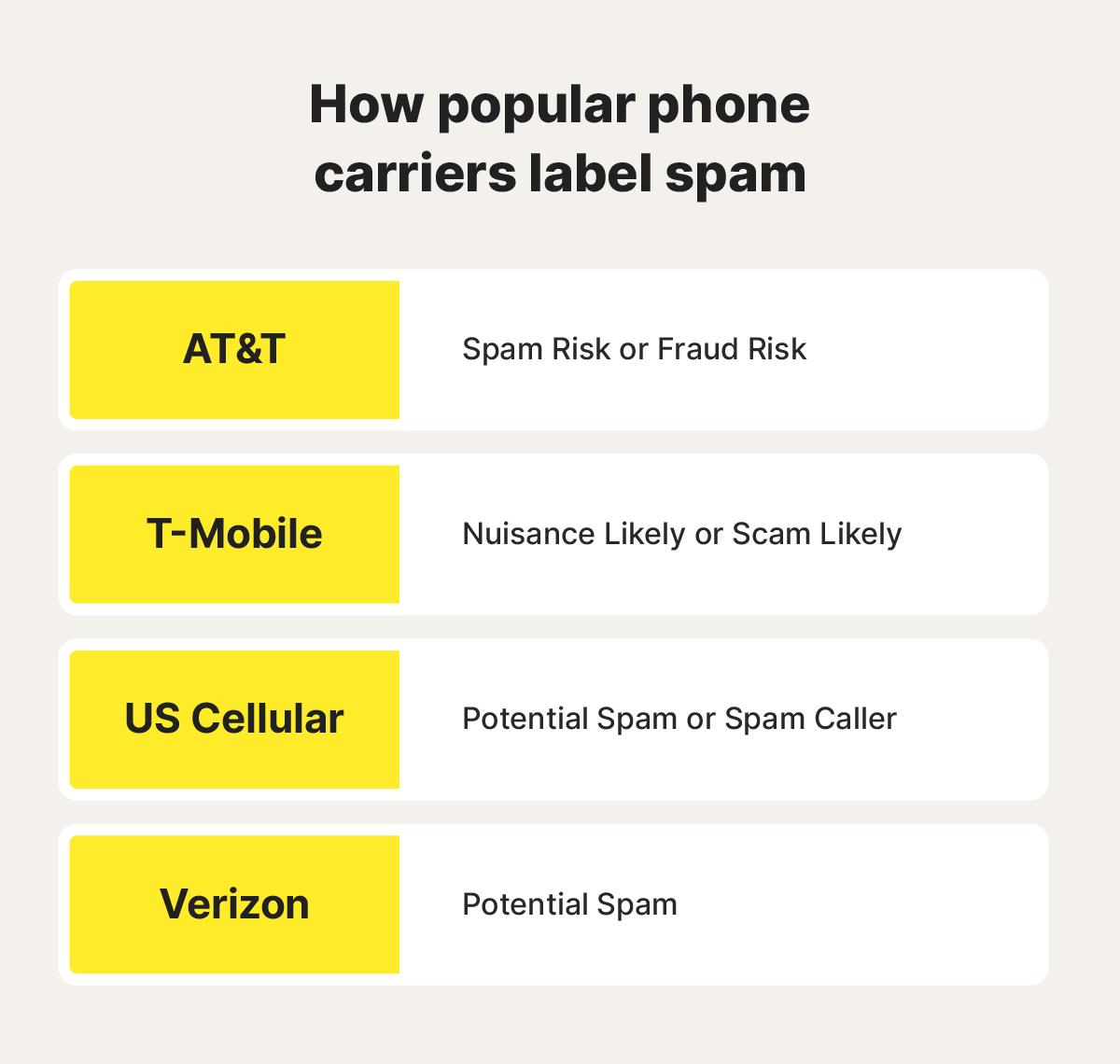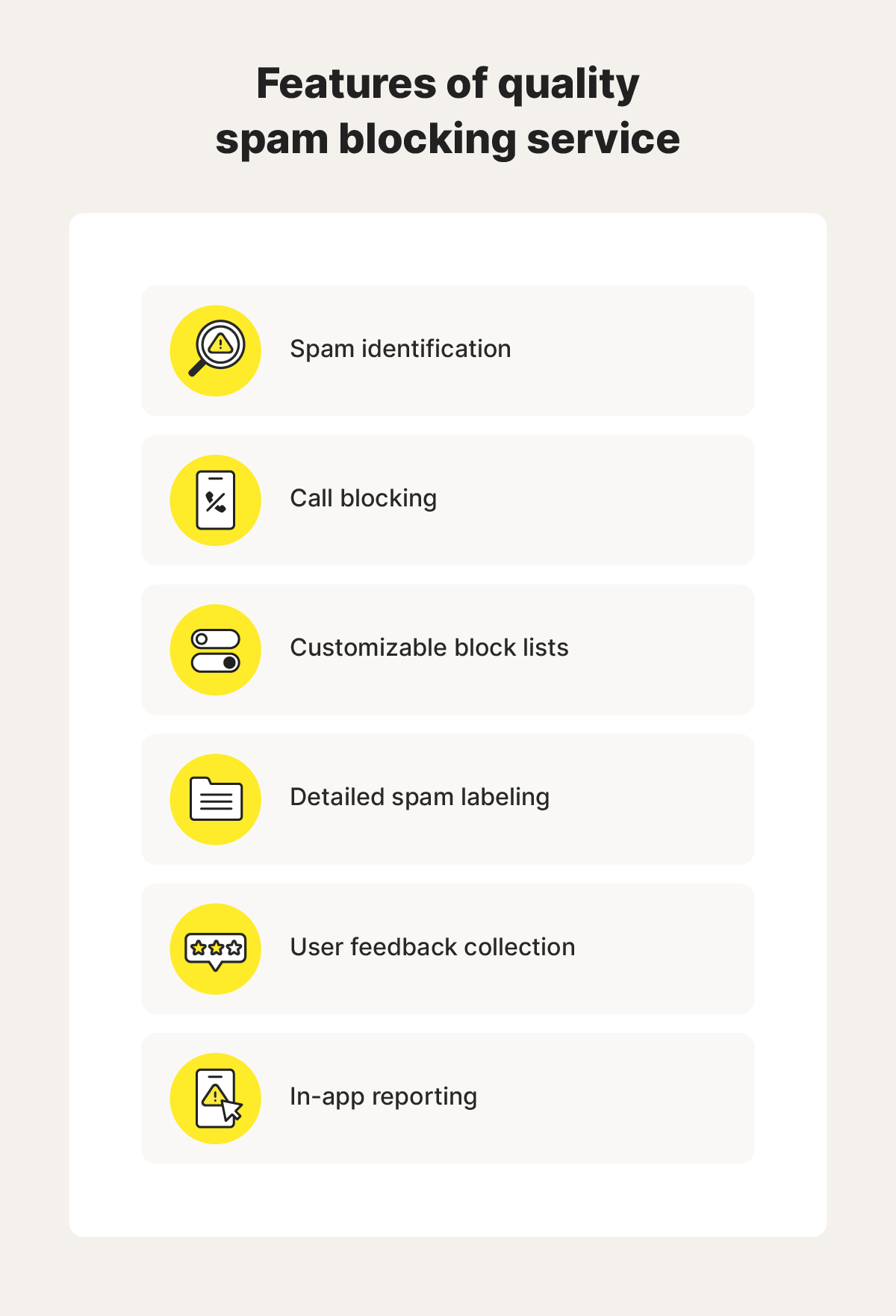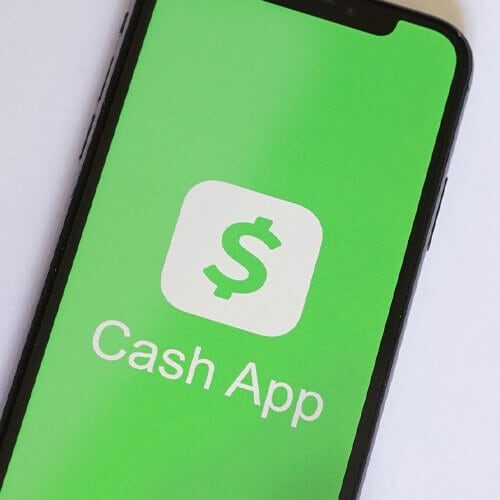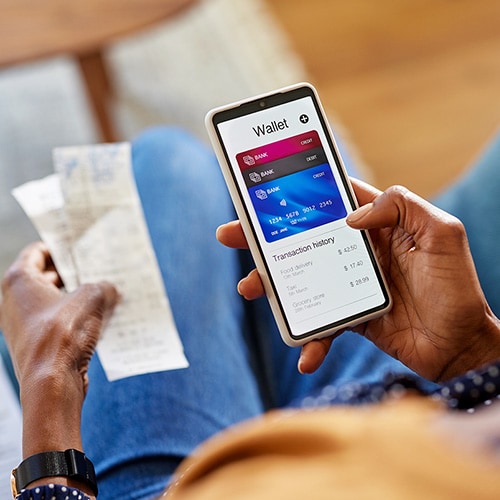† LifeLock does not monitor all transactions at all businesses.
Research from Truecaller found that spam and scam calls cost U.S. adults as much as $25 billion each year, with victims losing an average of $452 to scams. As if those numbers aren’t bad enough, the risk posed by spam and scam callers is only likely to worsen as new technologies and tactics make them more difficult to detect.
However, there are steps you can take to help reduce the chance of being targeted and minimize the damage if you are. Read on to learn more about the risks of potential spam calls and what you can do to minimize them.
What is “Potential Spam”?
“Potential Spam” is a label phone carriers use to notify customers that an incoming call is coming from an unverified, suspicious, or known spam or scam number. Cell phone carriers may label numbers — legitimate or otherwise — as potential spam after receiving multiple complaints about them or detecting suspicious activity, like the use of auto-dialers.
Different phone carriers use different versions of the phrase to label likely spam callers. US Cellular and Verizon use “Potential Spam,” AT&T uses “Spam Risk” or “Fraud Risk,” and T-Mobile uses “Scam Likely” or “Nuisance Likely.”


Regardless of the wording, these warnings all mean the same thing: your carrier suspects that the call is coming from a spam number.
Why am I getting so many potential spam calls?
There are lots of ways for your phone number to fall into the wrong hands, all of which can lead to an increase in spam calls. Data brokers can find your number in public records or on social media, for example, and may sell it to scammers. Your phone number can also get exposed if a website you’ve signed up for suffers a data breach.
These are the main places your number might be found by spam or scam callers:
- Public records including “people search” websites and business directories.
- Personally owned websites you use to blog or promote your business.
- Public social media accounts on platforms like Facebook, X, or LinkedIn.
- Phishing links sent over text, email, or social media that lead to fraudulent websites.
- The dark web where stolen data, including phone numbers, is often sold by “data brokers” on dark web marketplaces.
- Data harvesting forms masquerading as surveys or contest entries.
- Data breaches where hackers steal people’s information, including phone numbers, from businesses.
If you’re getting inundated with spam calls, LifeLock can help. As a LifeLock member, you’ll benefit from dark web and people search site monitoring that sends automatic notifications† when your phone number is found online, so you can work on getting it removed. You’ll also benefit from a range of additional identity theft protection features that help boost your defenses against scammers.
What happens if I answer a potential spam call?
If you answer a potential fraud or spam call, you may inadvertently give the caller confirmation that the number is active which can lead to an increase in spam calls in the future. However, a spam caller won’t be able to take advantage of you if you realize your mistake and end the call before sharing sensitive information.
The real problems arise if you fall for the caller’s scheme and share personal information like your Social Security number (SSN), bank account information, or credit card details. Giving these details away puts you at risk of identity theft and financial fraud.
What to do if you answer a spam call
If you realize you’ve answered a spam or scam call, don’t provide any personal information and hang up immediately. Then, block the number and report it to both your cell carrier and the Federal Trade Commission (FTC).
If you shared personal information before realizing you were speaking with a scammer, you should immediately take steps to protect your identity and finances. Start by:
- Freezing your credit or placing a fraud alert
- Reporting the incident to your bank
- Reporting the scam to the FTC
- Monitoring your credit report for fraudulent or unauthorized activity
- Updating any compromised passwords or security questions
- Increasing online security measures including enabling two-factor authentication (2FA)
Should I block potential spam calls?
Yes, in most cases, blocking the numbers that are labeled as potential spam calls is an effective way to reduce unwanted interruptions and help protect yourself against falling for a scam.
You can also enable a spam filter, either using the built-in options on your phone or by downloading a trustworthy dedicated spam filter app. Just be aware that some spam filters may prevent legitimate calls from reaching you if they come from an unknown number.
How to stop spam calls
You can combat potential spam or fraud calls by enabling settings that filter calls from unknown numbers to voicemail, blocking spammers that slip through the cracks, registering with the National Do Not Call Registry, strengthening your defenses with a spam-blocking service, removing your phone number from the web, and reporting spam calls.
Filter calls from unknown numbers
Filtering calls from unknown numbers and sending them straight to voicemail can significantly cut down on the number of spam calls you have to manage. Here’s how to do it on iPhone and Android (steps for Android devices vary slightly depending on the brand and Android version).
How to filter unknown numbers on iPhone:
- Go to Settings, select Apps, and tap Phone.
- Choose Silence Unknown Callers.
- Toggle the switch to the right to send unknown numbers to voicemail.
How to filter unknown numbers on Android:
- Open the Phone app.
- Tap the three vertical dots at the top of your screen, then Settings.
- Toggle the switch next to Filter spam calls to avoid notifications from suspected spam calls.
Use a spam-blocking app or service
A third-party spam call-blocking app or service can bolster your built-in spam filter and help identify unwanted calls from telemarketers, scammers, and robocallers. These apps use number analysis, caller ID analysis, and user feedback to predict if inbound calls are legitimate. Some also offer features like custom block lists and call reporting to make spam management easier.


You can also use spam-blocking tools provided by your phone carrier. Here are a few you might find helpful:
- AT&T Active Armor is a call protection service that automatically identifies and blocks spam calls, sends unknown calls to voicemail, and allows you to create custom block lists.
- T-Mobile Scam Shield is a service that helps identify and block spam calls, tells you what type of spam a call is, and makes it easy to report spammers via the app.
- Verizon Call Filter is a service that helps block robocalls and spam and shows the caller ID for unknown numbers (even if they’re not saved in your contacts). It also provides spam risk ratings so you can decide whether or not to block a call.
Block spam callers
You can manually block individual spam callers that manage to sneak through your first lines of defense to stop annoying repeat phone calls.
Here’s how to block spam callers on iPhones:
- Open the Phone app.
- Tap Recents at the bottom of your screen.
- Find the spam number and tap the blue “i” to the right of it.
- Scroll down and choose Block this Caller.
Here’s how to block spam callers on Android:
- Open the Phone app.
- Find Recents at the bottom of your screen.
- Select the number you want to block.
- Choose the Info icon next to or under the number.
- Tap Block and confirm your choice.
Register with the National Do Not Call Registry
Adding your phone number to the National Do Not Call Registry should keep law-abiding telemarketing companies from contacting you. Once you’ve registered, it’s illegal for companies to call you without your express consent. However, this step might not keep illegal scammers from trying to contact you.
Remove your number from the web
Proactively removing your phone number from social media and public people search sites can reduce your vulnerability to spam callers. However, if a hacker steals your contact details or other data and shares them on the dark web, there’s no easy way to remove it. In this situation, protect your digital identity by renewing security across accounts that may be compromised.
Report spam calls
Finally, you can report spam calls to the FTC and Google (if you’re an Android user) so they can flag future calls from the number as potential spam.
To report a spam call:
- To the FTC: Visit the FTC website and follow the on-screen instructions. During this process, you’ll have a chance to share details about the call, including the phone number that was used.
- On Android: Go to the recent calls log, select the spam number, and hold the number until you see the option to Report spam.
Help protect against spam calls
LifeLock includes privacy monitoring and dark web monitoring features that scan hundreds of millions of data points per second, helping you find your phone number and other personal information in places it’s not supposed to be so you can take steps to remove it and shore up the security of your personal information.
As a LifeLock member, you’ll also qualify for support from a U.S.-based identity restoration specialist and reimbursement for up to $25,000 of funds stolen through identity theft, helping you recover if you ever fall for a scam on the phone.
Editor’s note: Our articles provide educational information. LifeLock offerings may not cover or protect against every type of crime, fraud, or threat we write about.
Start your protection,
enroll in minutes.
LifeLock is part of Gen – a global company with a family of trusted brands.
Copyright © 2025 Gen Digital Inc. All rights reserved. Gen trademarks or registered trademarks are property of Gen Digital Inc. or its affiliates. Firefox is a trademark of Mozilla Foundation. Android, Google Chrome, Google Play and the Google Play logo are trademarks of Google, LLC. Mac, iPhone, iPad, Apple and the Apple logo are trademarks of Apple Inc., registered in the U.S. and other countries. App Store is a service mark of Apple Inc. Alexa and all related logos are trademarks of Amazon.com, Inc. or its affiliates. Microsoft and the Window logo are trademarks of Microsoft Corporation in the U.S. and other countries. The Android robot is reproduced or modified from work created and shared by Google and used according to terms described in the Creative Commons 3.0 Attribution License. Other names may be trademarks of their respective owners.







